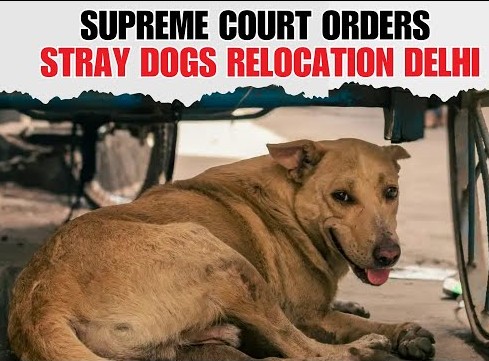
Follow WOWNEWS 24x7 on:

In a landmark moment for urban animal welfare and public safety, the Supreme Court of India is scheduled to pronounce its ruling today, August 22, on a series of interim pleas challenging its earlier directive to relocate all stray dogs in Delhi and the National Capital Region (NCR) to designated shelters. The decision, expected to shape future policy on stray animal management, has ignited passionate debate across legal, civic, and activist circles.
Here’s a comprehensive breakdown of the issue and what’s at stake:
1. Background to the Case
- On August 11, the Supreme Court issued a suo motu directive mandating the capture and relocation of all stray dogs in Delhi-NCR within eight weeks
- The order came in response to rising incidents of dog bites, especially involving children, and was triggered by a front-page report titled “City Hounded By Strays, Kids Pay Price”
- The Court emphasized that the situation had become a matter of urgent public safety, requiring immediate and coordinated action from civic authorities across Delhi, Noida, Gurugram, Ghaziabad, and Faridabad
2. Key Highlights of the August 11 Directive
- All stray dogs must be captured, sterilized, vaccinated, and housed in government-approved shelters
- No dog once captured shall be released back into public spaces
- Civic bodies were instructed to begin the process immediately and submit weekly compliance reports
- The Court warned that any obstruction to the relocation process would invite contempt proceedings
3. Legal and Ethical Flashpoints
- The directive marks a departure from the Animal Birth Control (Dogs) Rules, 2001, which advocate sterilization and re-release into the same locality
- Animal rights groups argue that the new order undermines decades of community-driven efforts and risks overcrowding shelters
- Public safety advocates, including residents’ welfare associations, support the move, citing frequent dog attacks and lack of accountability from municipal bodies
- The case now hinges on balancing Article 21’s guarantee of human life and safety with constitutional protections for animal welfare
4. What the Supreme Court Will Decide Today
- Whether the August 11 directive should be stayed or upheld
- If upheld, the Court may clarify logistical and humane treatment protocols for sheltering over 10 lakh stray dogs
- If stayed, it could reinstate the ABC Rules and call for improved implementation rather than mass relocation
- The ruling will also determine the legal precedent for future stray animal management across Indian cities
5. Reactions from Stakeholders
- Animal welfare organizations have called for a more sustainable and humane approach, warning of disease outbreaks and ecological imbalance in overcrowded shelters
- Parents’ groups and school authorities have welcomed the directive, citing increased safety for children
- Legal experts note that the case could redefine the scope of suo motu powers and judicial intervention in municipal governance
6. Broader Implications
- The verdict could influence how other cities approach stray dog management, especially in high-density urban zones
- It may prompt legislative amendments to reconcile public health concerns with animal rights frameworks
- The case has also sparked renewed interest in civic accountability, with calls for better infrastructure, public helplines, and community engagement
7. What Comes Next
- If the Court upholds the directive, civic bodies will need to rapidly scale up shelter infrastructure and ensure humane treatment
- If the directive is modified or stayed, expect a renewed focus on sterilization drives, public awareness campaigns, and stricter enforcement of ABC Rules
- Either way, today’s ruling will be a defining moment in India’s urban animal welfare landscape
Sources: The Hindu, Hindustan Times, India Today, Firstpost, Legal Bites, Legal Service India


